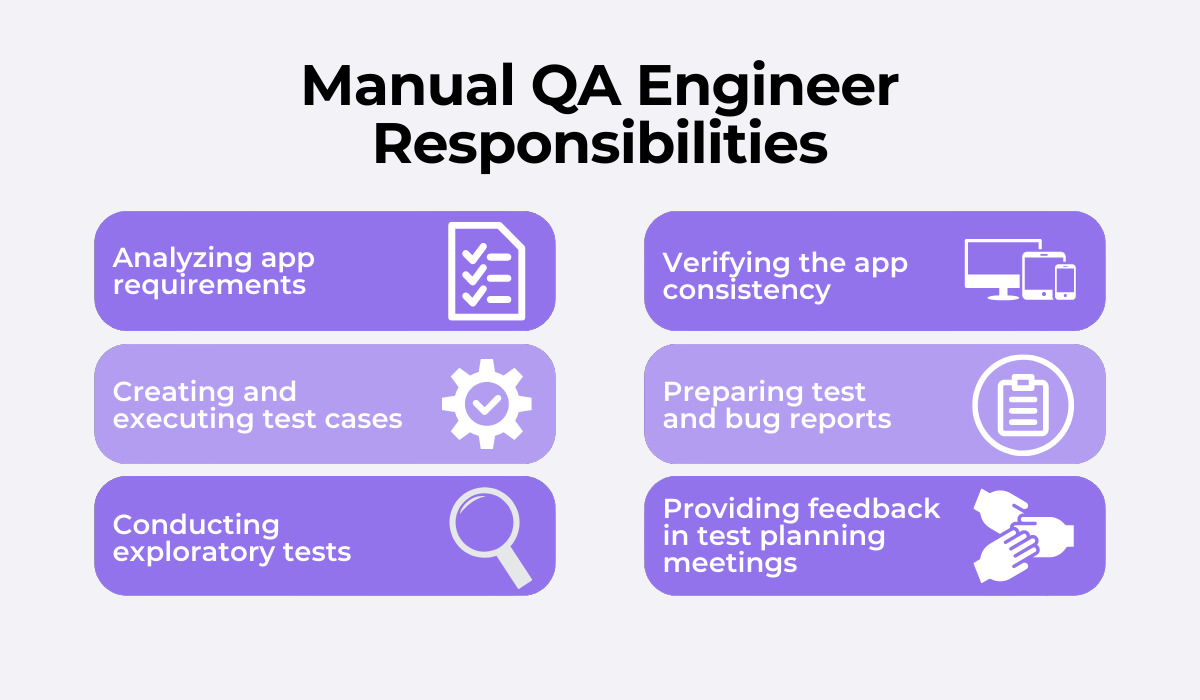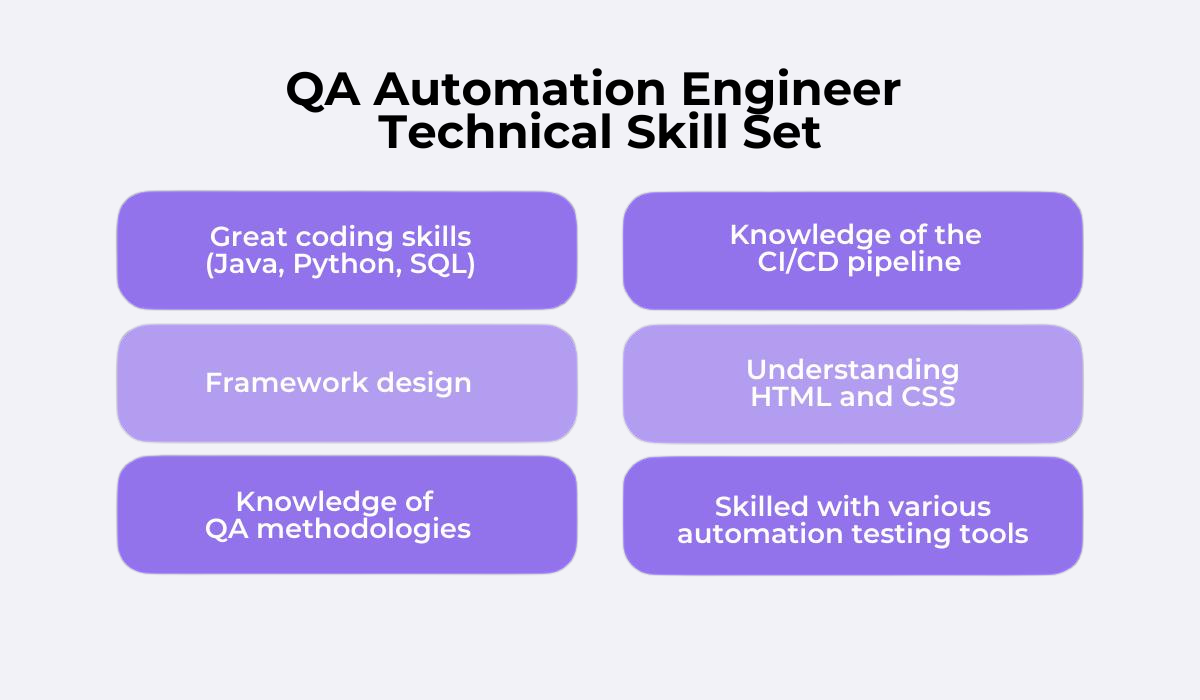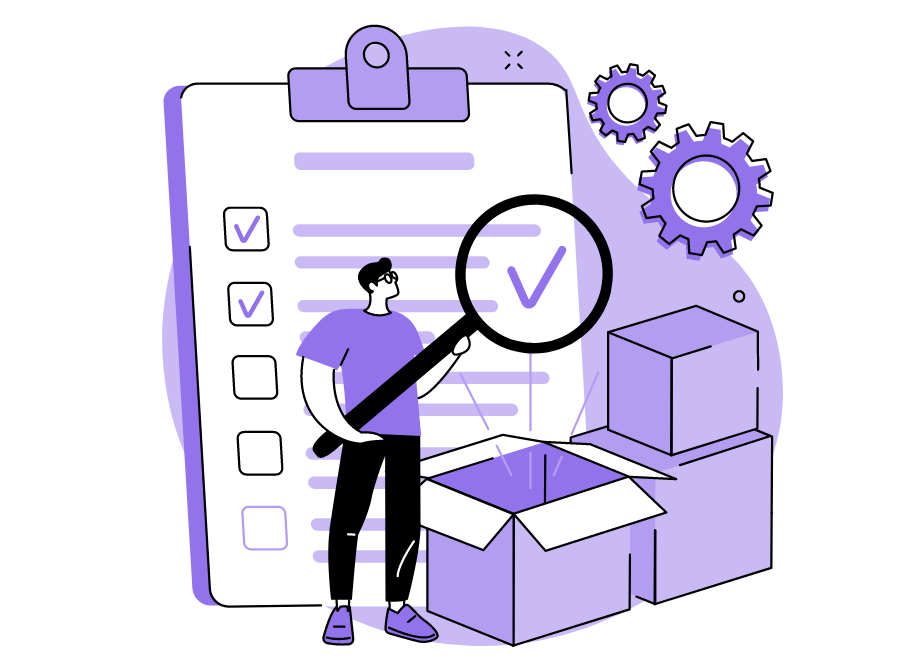
Quality assurance (QA) is a crucial component of the software development process – it ensures that the software delivered to end users meets required standards and specifications.
As a team effort, the software QA process involves collaboration. Usually between multiple experts and professionals, each with their own specific role and responsibility.
Understanding various positions within the software QA team is vital for those involved in the QA process, as it can greatly help with management and getting the best out of each member.
In the following sections, we will cover the main roles within the QA team, the skills required, and their duties.
Table of Contents
Manual QA engineer
Manual QA engineers are the backbone of any QA testing process.
They have to ensure that a piece of software works as expected by manually testing it and identifying any defects – or issues that need to be fixed.
Their responsibilities consist of:
To meet these responsibilities, manual QA engineers need both technical and interpersonal skills.
For example, they need to know various testing methodologies such as exploratory testing, be familiar with QA and testing documentation, and be able to work with other team members, especially with developers.
Manual QA engineers use a variety of tools to perform their job, including:
- Test management tools such as Xcode and Android Studio
- Defect tracking tools
- Project management tools
- Communication and collaboration tools such as Slack and Zoom
As shown in the image above, one of the jobs of a manual QA engineer is to report the results of the tests they run, which includes writing detailed bug reports for any found defects.

Get unreal data to fix real issues in your app & web.
Although they can write these reports manually, using a bug reporting tool such as Shake is a good way to streamline this process.
Shake automatically collects and attaches over 70 different metrics of useful data that can help developers resolve a bug more effectively.
Among other things, a detailed activity history log is recorded and attached to the reports.
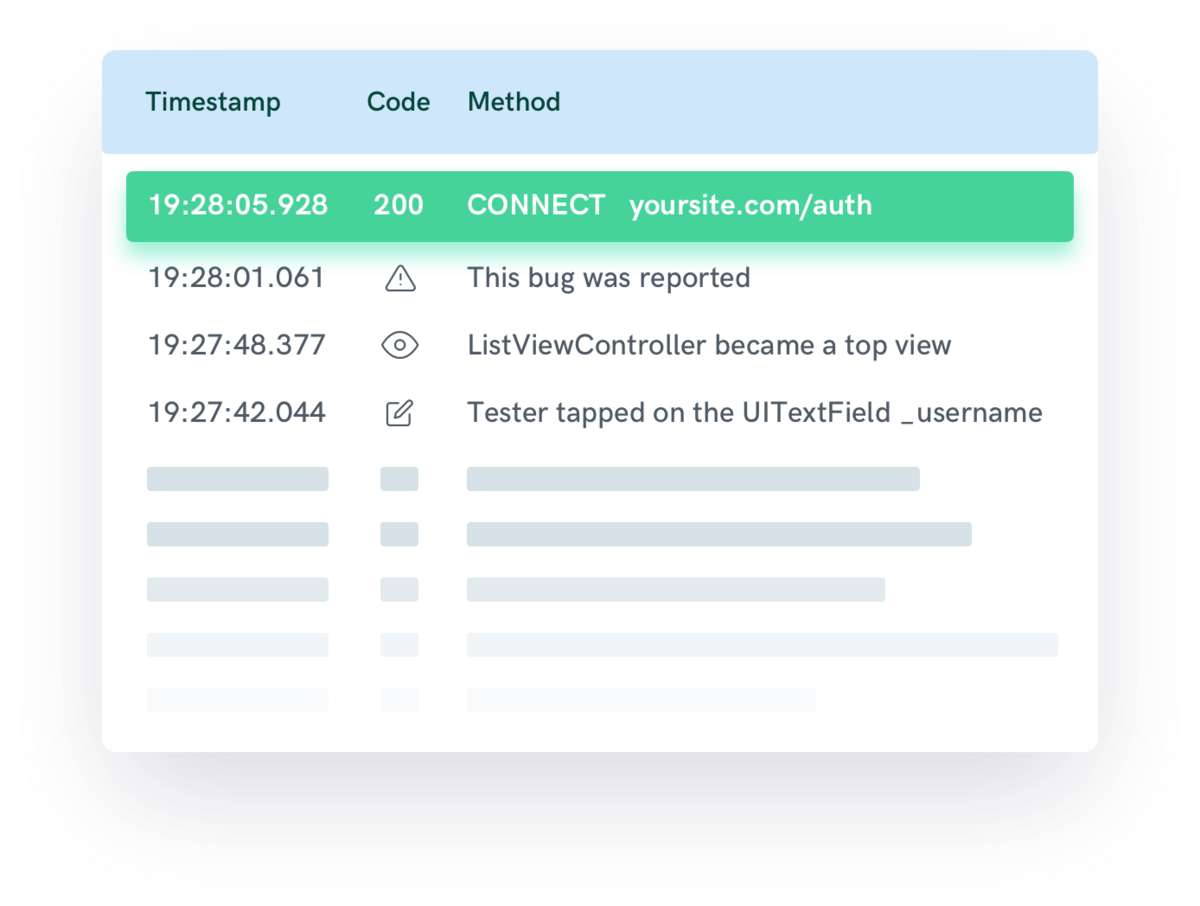
The activity history data that Shake tracks automatically includes network traffic, notifications, system events, and various logs—providing developers with a detailed view of the environment and events surrounding the bug.
All in all, using their knowledge and skills, as well as useful tools such as Shake, manual QA engineers help ensure that an app meets the end user’s needs and eliminates as many bugs as possible.
QA automation engineer
While manual testing is helpful for the more nuanced and complex issues in the testing process, modern testing practices increasingly use automation to make testing more efficient.
The professionals responsible for handling the automated testing process are called QA automation engineers, and they play another crucial role in the software QA team.
The primary responsibility of QA automation engineers is designing and developing automated test scripts used to test software—all the while working to maintain existing scripts and updating them when necessary.
Their other duties include:
- Documenting defects in a tracking system
- Identifying test cases that can be automated
- Improving the workflow of other teams using automation
To become a successful QA automation engineer, individuals must have a strong foundation in software development and testing concepts.
Compared to manual QA engineers, these professionals need to have a more technical background, and their technical skill set should include:
As automation engineers create and maintain test scripts, they need to have a deep understanding of the programming languages used to create them to ensure they are made to be comprehensive, efficient, and easily maintainable.
Moreover, this type of testing can involve a variety of testing tools, and QA automation engineers need to have a solid grasp of the tools and technologies used in the automation process.
They should also be proficient in using different automation tools and frameworks, have experience in working with API and database testing, and be able to use version control tools like Git to manage and maintain the testing scripts.
To be able to build, run, and maintain automated testing scripts efficiently, these professionals will usually use one or more of the following top test automation tools:
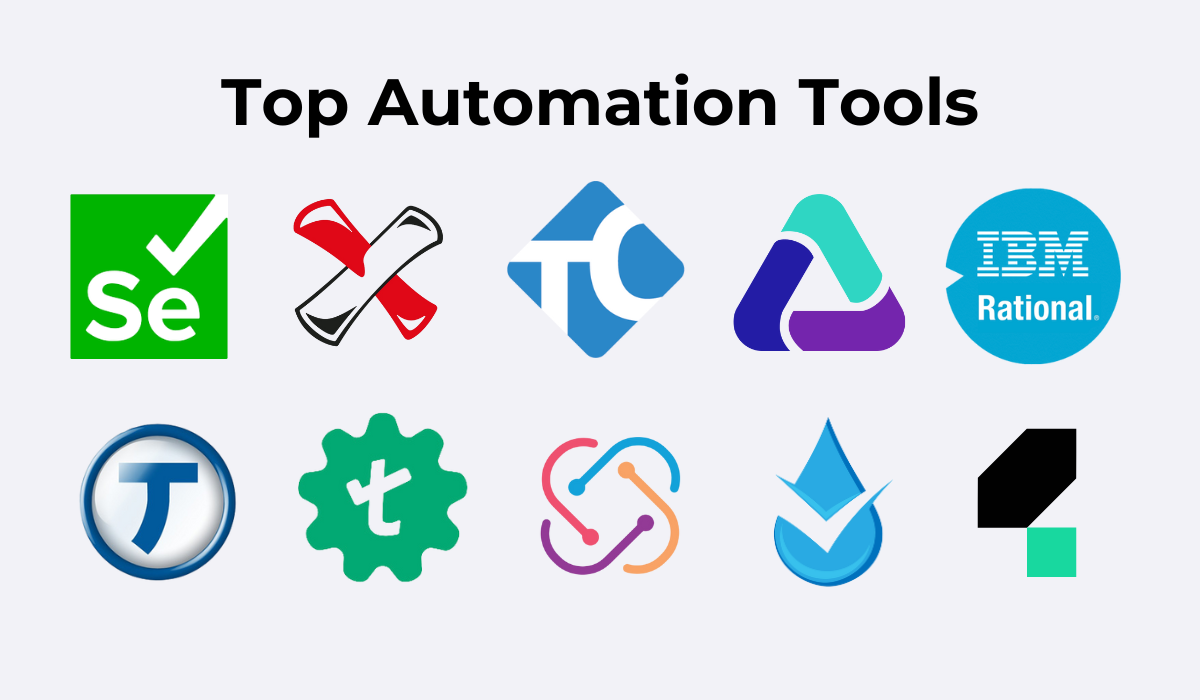
Great automation engineers would have explored these tools during their careers and would have determined which ones are the right testing tools for them—getting familiar with them and learning how to use them effectively.
Overall, with their strong foundation in software development and testing concepts, QA automation engineers help make the overall QA testing process more efficient and cost-effective in the long run.
Test analyst
The next role in the software QA team we cover are the test analysts—individuals possessing strong analytical skills who use them to study the testing process and direct the efforts of QA engineers.
Test analysts use their strong understanding of the development process and testing methodologies to plan the testing activities.
Usually, they focus on analyzing an app’s testing requirements and then perform various tasks, such as:
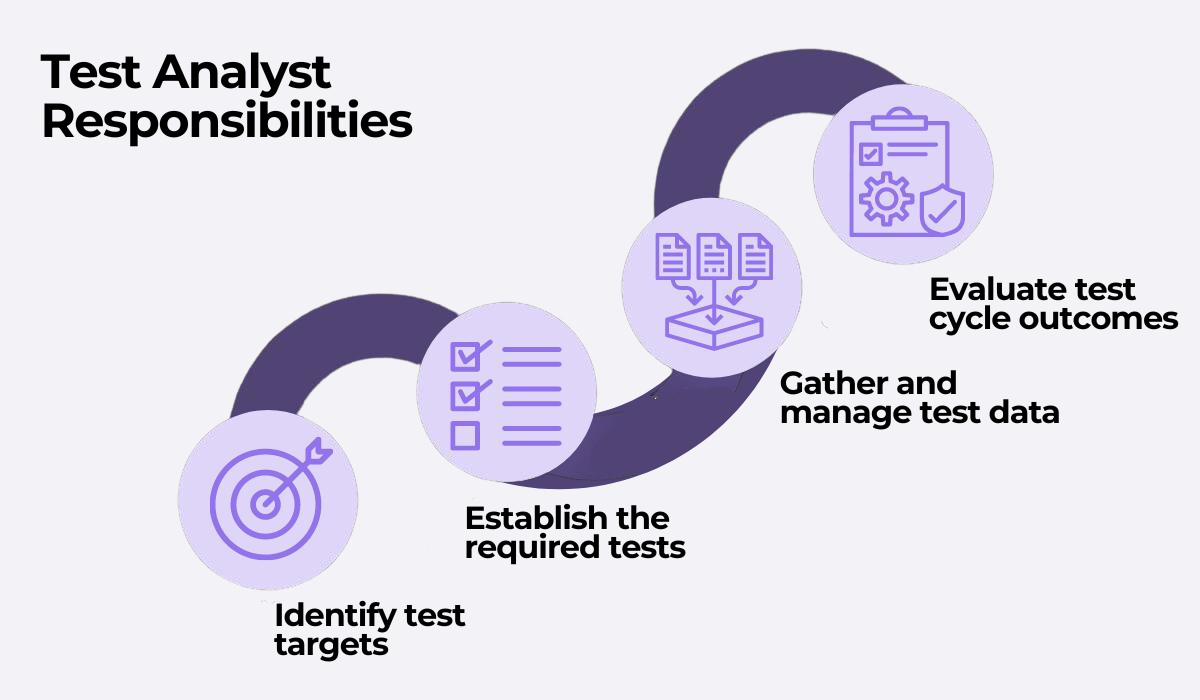
Test analysts are responsible for identifying which areas of the app will need testing, defining which tests will be conducted, and evaluating the expected test coverage as a result of running the tests.
After a test cycle is done, test analysts will also analyze the test results and provide feedback to the development team—collaborating with project managers, developers, and other QA professionals to identify areas in the testing process that need improvement.
To accomplish their duties, test analysts need to possess a wide range of skills, including:
- Analytical skills and attention to detail
- Time management and organizational skills
- Effective communication skills
- Ability to work independently and in a team environment
Analysts usually work with similar software solutions as manual and automation engineers do when it comes to communication and project management.
They use tools like Slack, Skype, and Zoom for communication and Jira, Confluence, Jenkins, and Git as management tools.
Besides these, they usually use various analytic tools to manipulate large amounts of data efficiently, automating tasks such as data input and helping generate test reports more accurately.
The tools used include Oracle SQL, Doker, Red Hat, Vmware, iWork Suite, and common office apps such as MS Office and Google Docs.
Overall, test analysts work closely with the manual and automation testing teams to ensure that the product is tested thoroughly and that defects are identified and reported—managing the testing process and ensuring it’s conducted efficiently.

Test architect
If the job of test analysts is to decide what to test, the test architects are the individuals in a QA team responsible for developing the overall testing infrastructure.
A test architect is a professional who deeply understands software testing processes, methodologies, and tools.
They play a critical role in creating a comprehensive testing framework and ensuring that the testing process is optimized.
To do so, the test architect uses the most effective tools and technologies.
Or, as explained by this Quora user,

To accomplish these responsibilities, a test architect should possess a diverse skill set, including:
- Diagnostic and problem-solving skills
- Knowledge of QA practices and testing methods
- Ability to create test automation frameworks
- Knowledge of programming or scripting languages
When it comes to the tools used by test architects, they are very similar to those we already discussed, as they use the same project management and communication tools to interact with team members.
However, they also use tools that are specific to their role, such as the build management tools shown in the illustration below.
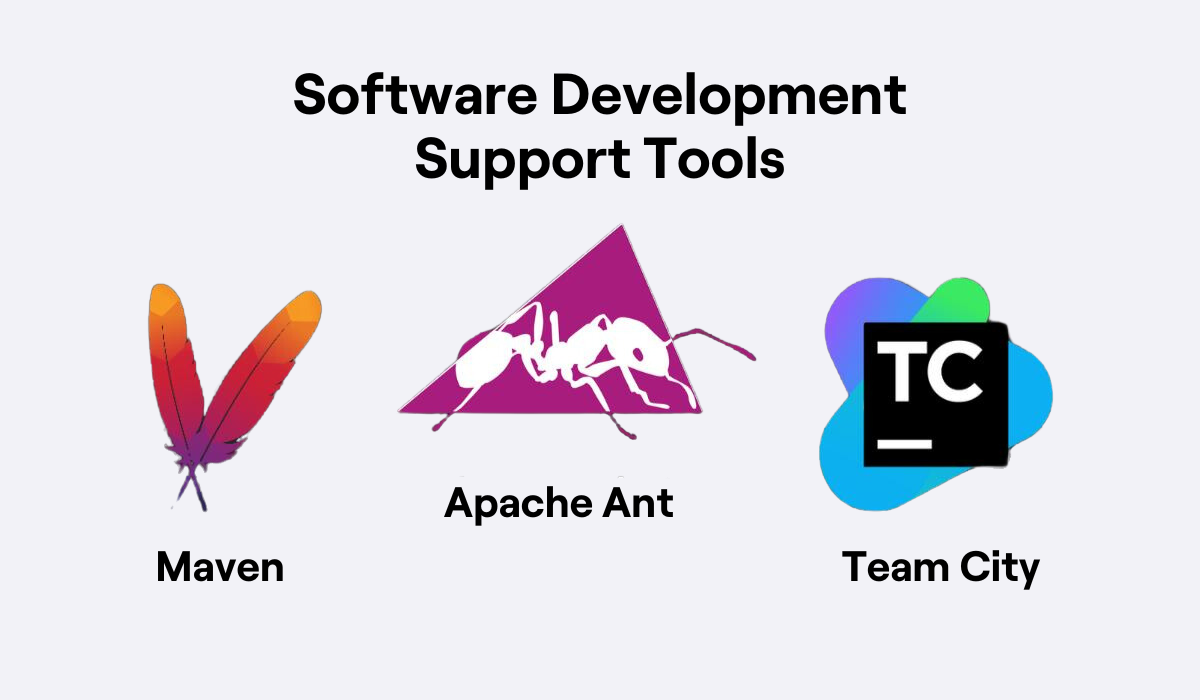
These tools help test architects automate the software testing process and manage various aspects of software testing.
For example, Apache Ant is a Java-based tool used by test architects to manage the testing process, especially when integrating automated testing procedures with the build process.
With Ant, test architects can define tasks that automate the execution of test scripts, compile source code, and generate test reports, among other things—ensuring that the entire testing process is consistent, repeatable, and integrated with the build process.
Overall, test architects are responsible for defining the right techniques, tools, and guidelines and are crucial for building an effective QA process.
QA lead
QA leads are essential members of a QA team who supervise the entire testing process and the day-to-day activities within that process.
The responsibilities of a QA lead are extensive and include planning and implementing QA strategies, developing test plans, and collaborating with cross-functional teams.
All of these tasks are done with the primary goal of ensuring that all QA processes comply with industry standards, meet business requirements, and deliver high-quality products.
To handle their duties effectively, a QA lead should possess strong, mostly non-technical, skills, such as:
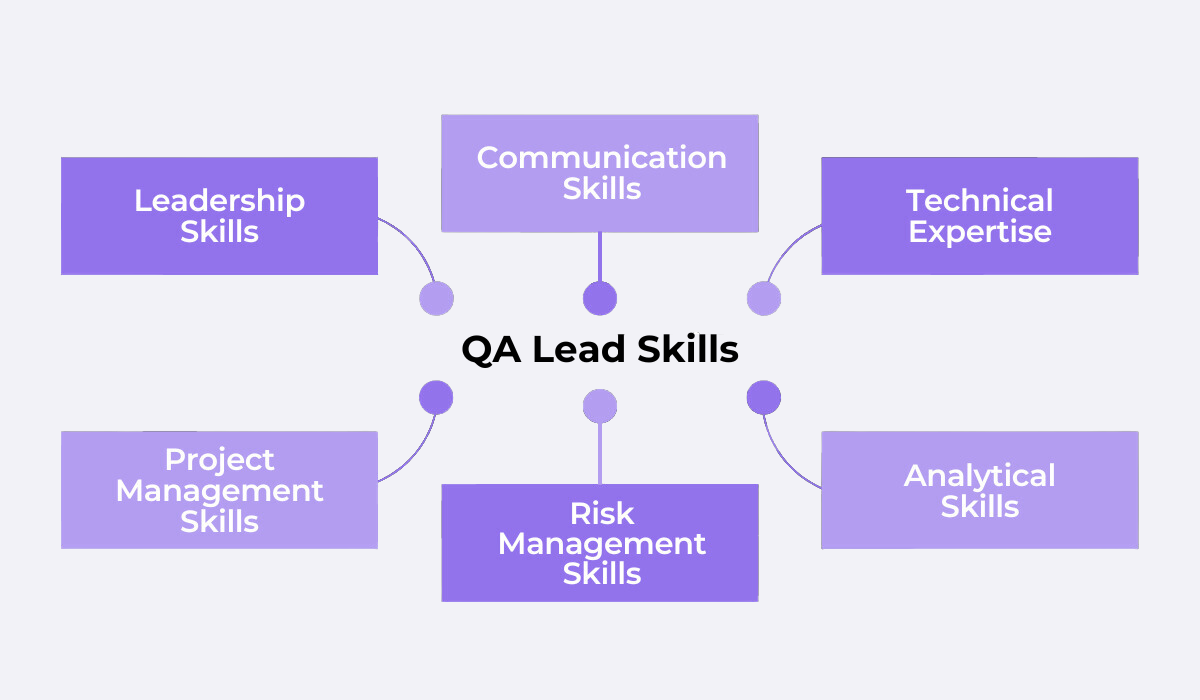
These skills are handy as QA leads sometimes need to work closely with the development team, product owners, and project managers to ensure everyone is on the same page regarding testing and QA efforts.
As for the tools these professionals use, they are not very technical in nature. In fact, they include some of the same ones we have already covered in the previous sections:
- Project management tools: Jira, Confluence, Jenkins, Git
- Documentation tools: MS Office, Google Docs
- Communication tools: Slack, Skype, Zoom
All in all, the QA lead oversees and is responsible for the entire software QA process, and they are a crucial role every QA team must have to lead and manage the other members effectively.
QA manager
The final important role in the QA team we cover in this article is that of the QA manager.
A QA manager is responsible for overseeing the software QA team—as QA leads and QA managers are often used interchangeably, we can set a QA manager apart with these four responsibilities:
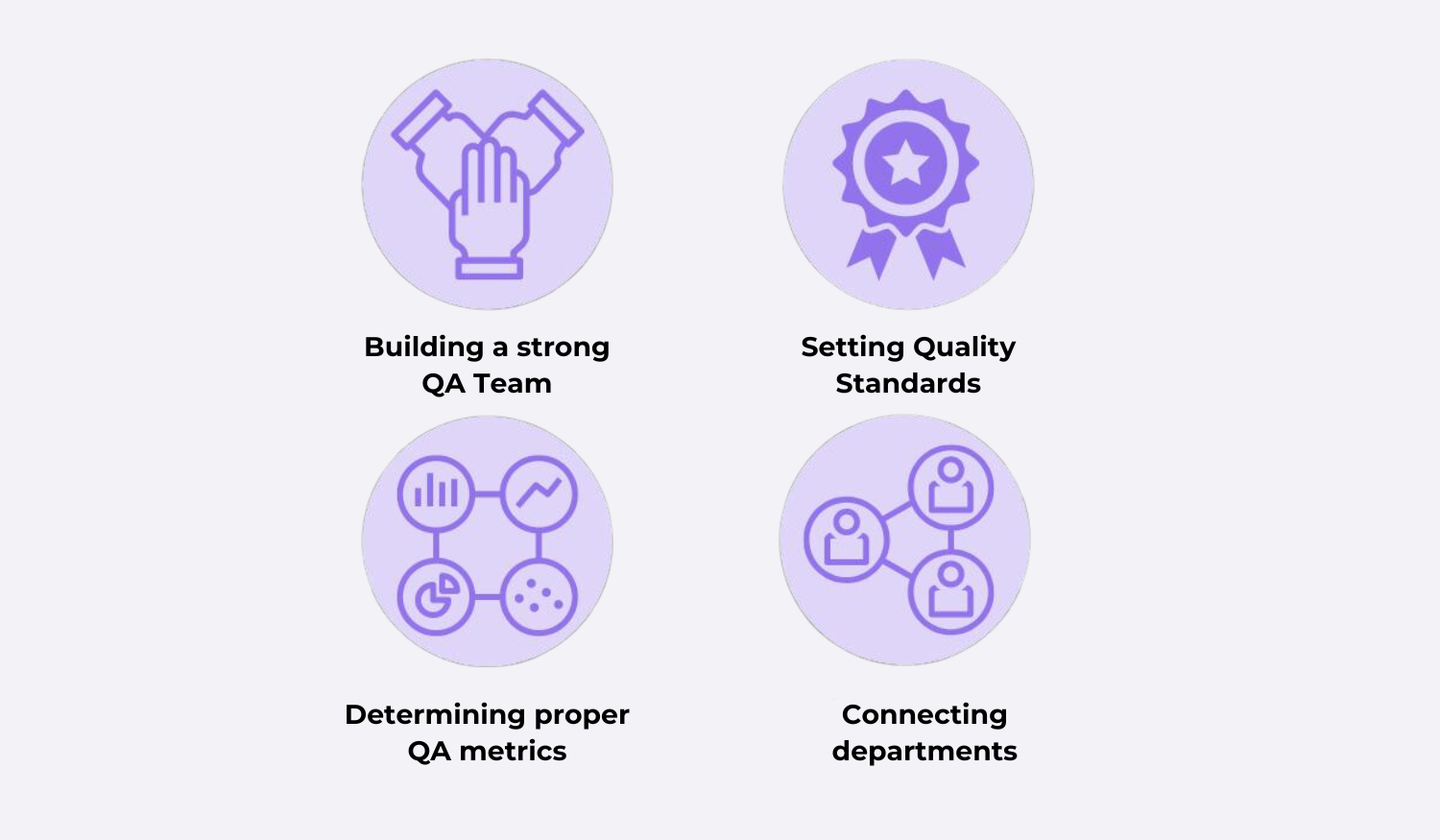
These professionals are responsible for hiring and supervising QA engineers, test analysts, and test architects.
Their duties include overseeing and prioritizing their efforts and assuring everyone is working towards the same overall goal.
They are also responsible for setting the quality standards that the QA team will adhere to and determining the metrics that will be used to measure whether those standards are being met.
These metrics are also called key performance indicators or KPIs, and some of the essential ones are shown in the following image:
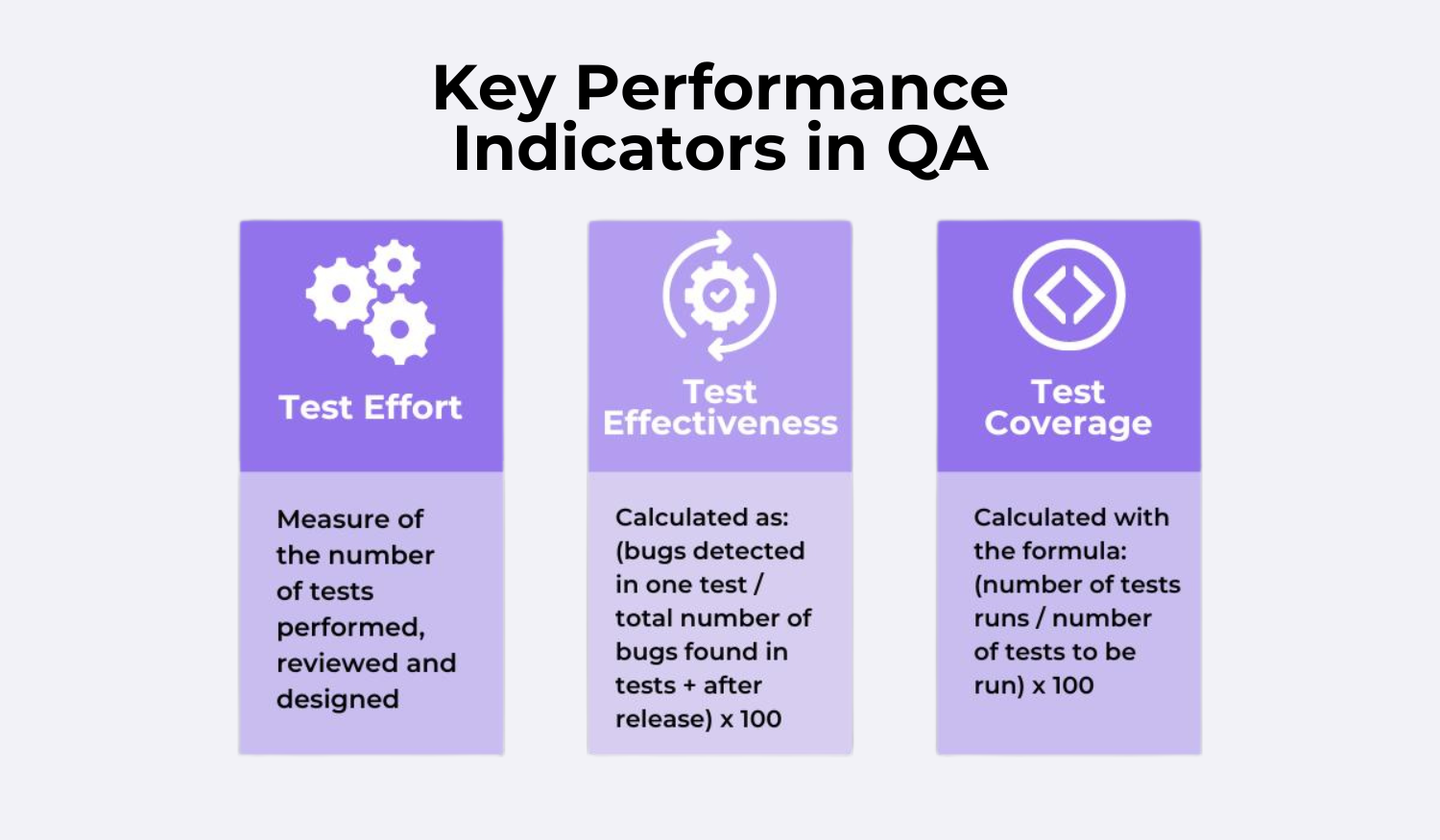
Besides creating and implementing the quality standards, one of the duties of QA managers is to try and coordinate with other departments and ensure that other departments follow them as well—identifying any problem areas that can affect the development process.
The skills necessary for this task and the overall QA management position usually consist of:
- Written and verbal communication
- Organizational and time management skills
- Problem-solving and analytical skills
- Basic knowledge of web design and scripting languages
- Requirement analysis skills
- Cross-team synchronization ability
To be effective in this role, QA managers use various tools, including project management software, issue tracking tools, and test management software.
They may also use specialized software for specific tasks, such as automated testing tools, functional testing tools, and API and GUI test automation tools.
Some of the software solutions on this list are Selenium, Katalon Studio, TestComplete, SoapUI, Postman, and Ranorex.
These tools help QA managers manage the testing process, track bugs, and ensure that the QA team works efficiently.
Overall, with the necessary skills, experience, and tools at their disposal, QA managers can effectively manage the QA team and ensure they work with the goal of providing a high-quality piece of software.
Conclusion
In this article, we explored the various roles and responsibilities within the software QA team and how these individuals complement each other and together help create an effective QA process.
It’s important to have a good understanding of these roles, as this information can help pinpoint any gaps in the QA team.
It can also ensure that your developers efficiently communicate and collaborate with the right individuals—leading to a more efficient QA process.
Hopefully, by reading this article, you are now more familiar with the different roles of the software QA team and have a better perspective on how these individuals fit into the overall development process. If you want to get more insight, check out this blog post.

